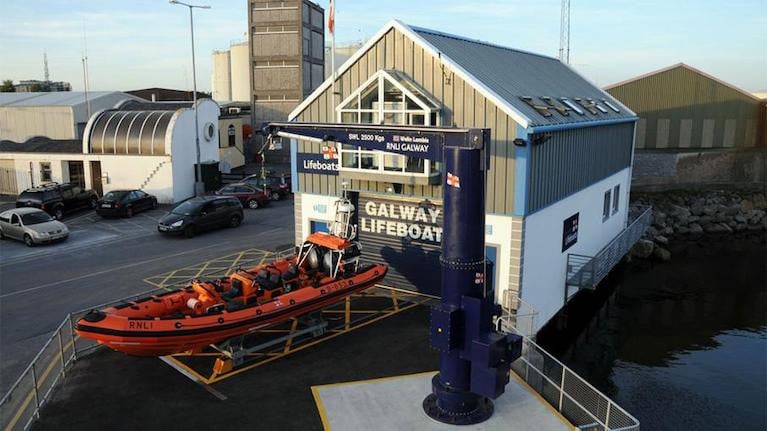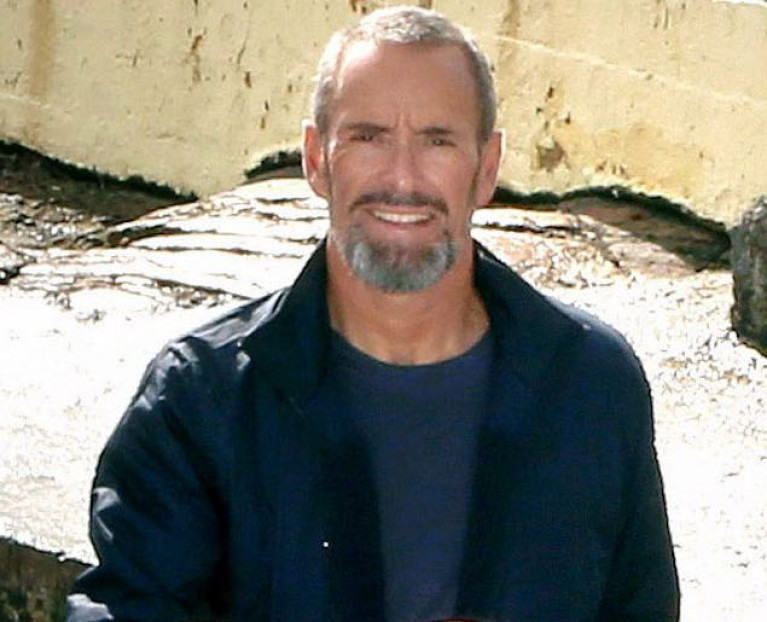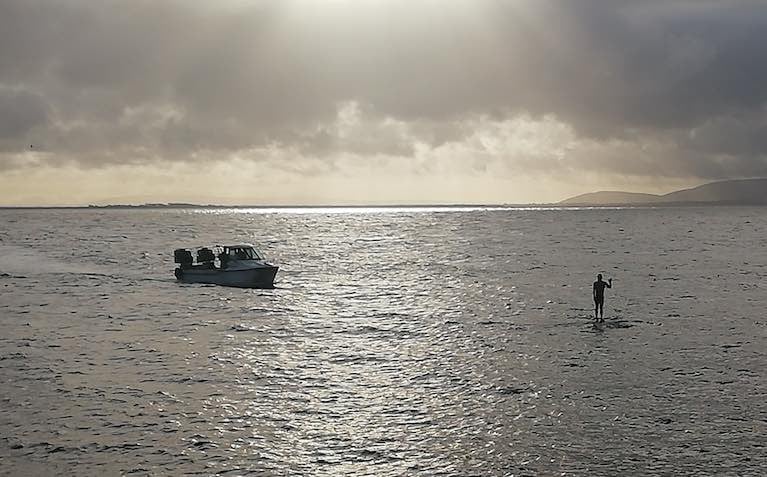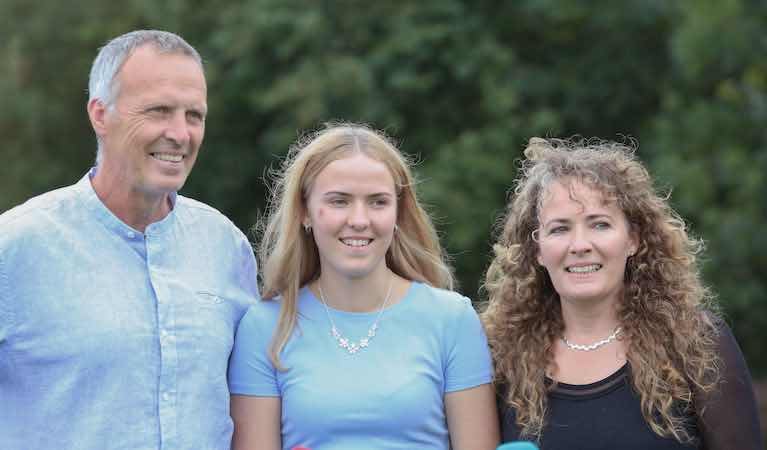Displaying items by tag: Galway Bay
With its new format and course recently announced, RWYC Round Britain & Ireland Race that calls to Galway Bay next summer entry opens this Friday.
Commodore of the Royal Western Yacht Club, Chris Arscott, said, “The new format now allows for either double-Handed or four-handed crews. As the RWYC was the first club to introduce shorthanded offshore racing in the world, it is in our DNA to continue to develop and support this discipline. We are introducing a 4-handed class to offer a step-change from fully-crewed to perhaps tempt others to join the ever-growing double-handed and solo racing world. Partial crew changes are also allowed in each stopover, allowing for more crews to enjoy this amazing race, if not in its entirety but to be part of a Round Britain and Ireland team.”
The course has also been revised to three stopovers which will offer a more balanced, accessible race both to the sailors and supporters alike. From starting in Plymouth, the venues have been announced as Galway, Lerwick and Blyth. The compulsory stopovers will remain at a minimum of 48 hours, allowing crews to rest, repair, replace (whether that be kit or crew), refuel and finally return in top shape to take on their next leg. Lastly, the race will do away with IRC certified handicaps and will instead revert to class splits on length overall.
"The race will do away with IRC certified handicaps and will instead revert to class splits on length overall"
Race Director Adrian Gray said, “Besides crew work, navigation is key to success in these races, so we are moving away from the IRC mentality and returning to our original format of classes based on Length overall as well as multihull and of course monohull. It is a format that we feel will attract real interest. We are also balancing the course to make the race more accessible, more comfortable and less of a time draw to the teams generally.
We have also received some interest from the 2 handed Olympic offshore hopefuls to join us.
After all, this is a race of 4 stages, all of similar leg lengths to that which will be on offer in FRANCE2024.”
The race starts on the 29th May, 2022.
Spaces are limited so do not hesitate in getting in touch with the RWYC team and express your interest to enter here
Sea Swimmer Rescued by Galway RNLI in Southerly Gale off Salthill
Galway RNLI lifeboat rescued a swimmer who got into difficulty off Blackrock beach in Salthill this afternoon during very challenging weather conditions.
The alarm was raised at 12.25 pm by a pedestrian who saw the woman struggling in the water between Blackrock and Ladies Beach, according to the RNLI.
The Irish Coast Guard sought the assistance of the lifeboat which launched from Galway Docks a short time later.
The crew was directed to the woman who was a couple of hundred metres from the shore opposite the Galway Bay Hotel, and the took her on board and brought her back to the lifeboat station - where an ambulance was awaiting with paramedic assistance.
The woman's condition was assessed, and she was able to return home a short time later.
Met Éireann's sea area forecast from 12 noon today had warned of gale-force eight to nine southerly winds for all coastal waters, including the Irish Sea.
RNLI Galway's deputy launch authority Shane Folan noted that there were "very challenging weather conditions, with high winds and breaking surf".
“We would advise anyone thinking of going swimming to let someone else know," he said.
The RNLI Galway lifeboat volunteer crew on the call-out were: David Badger (helmsman), Martin Oliver, Ross Forde and James Rhattigan.
Galway City Struggling to Cope with Untreated Waste Water
Galway city is struggling to cope with the volume of untreated wastewater released into the Corrib estuary and bay, a new report claims.
As The Times reports, a study by An Taisce estimates untreated water amounting to 30 Olympic size swimming pools in volume every month is being discharged into the Corrib and Galway Bay.
The environmental group’s study says that the Mutton island wastewater treatment plant does not have sufficient capacity to treat wastewater.
The Mutton island plant is currently handling wastewater from Galway city, Oranmore to the south-east and Barna to the west – at a time when the city‘s population is projected for rapid growth.
Local authorities are licensed to use “stormwater overflows” when a sewage treatment plant such as Galway’s Mutton Island is over capacity after heavy rain.
However, An Taisce says its analysis suggests discharges are taking place more regularly than during heavy rainfall.
The environmental group analysed four pollution reports filed by the Claddagh Beach Clean-Up Volunteer Group co-founded by musician Sharon Shannon.
It then compared the dates to rainfall data at the nearest Met Éireann weather station in Athenry, Co Galway, and found that recorded rainfall for the four dates was not unusual.
The report by An Taisce’s head of advocacy Ian Lumley also analysed contamination of three beaches in Galway city which do not have Blue Flag status – Claddagh, Grattan and Ballyloughane beaches.
An Taisce says that a new wastewater treatment plant must be built for the east of the city which would also cater Oranmore and Athenry.
Irish Water said it “is working in partnership with Galway City Council to review the findings of a report issued by An Taisce” and “a full statement will be issued in the coming days”.
Irish Water said it is “committed to ensuring our customers receive a safe and reliable supply of drinking water, and have their wastewater collected and safely returned to the environment”.
Read more in The Times here
Sea of Souls Film Pays Tribute to Claddagh Oliver Family & All Those Lost at Sea (VIDEO)
A tribute to the Oliver fishermen of Galway’s Claddagh and all those who have lost lives at sea is reflected in a moving short film spearheaded by arts consultant Brendan Savage.
Entitled Sea of Souls, the film captures images of 600 floating candles on the Claddagh basin, set to the music of The Galway Baytones male voice a capella group singing the 18th-century Scottish song The Parting Glass.
The film is intended to remember the Olivers and all sea fatalities, and to highlight the role of the Galway RNLI inshore lifeboat and Water Safety Ireland.
Savage, who is from the Claddagh, lost his own father in a trawler sinking, and says he was overwhelmed with sadness when father and son Martin and Tom Oliver lost their lives within 24 hours of each other after an incident in Galway Bay in early November.
The two men were close relatives of fishermen Patrick and Morgan Oliver who have been involved in a number of rescues, including locating the two paddleboarders, Sara Feeney and Ellen Glynn, after they went missing off Furbo last August.
“When you lose someone to the sea, it changes your relationship with the sea forever, and sadly I understand that that is like,” Savage explains.
His father Tom Savage (59) died when the trawler he was crew member of was sunk by a container ship under San Francisco’s Golden Gate bridge almost three decades ago.
“One Russian crew member survived, but my father and his skipper did not - and the skipper’s body was never found,” Savage says.
“As a child, I was taught that on stormy nights a candle was placed in the window to guide home the souls of those lost at sea,” he says.
Shortly before Christmas, he recruited a group of volunteers to help assemble 600 floating candles, timed to light up every evening for five hours.
He then secured the support of Heavy Man Films to document it for a video which is now available to view on YouTube.
Savage said a large number of individuals and businesses supported the initiative, including Galway City Council arts officer James Harrold and Water Safety Ireland deputy chief executive Roger Sweeney.
Peter Connolly and members of Badóirí an Cladaigh helped set up the elaborate candle display, and also illuminated their vessels berthed in the Claddagh basin.
Dr Brendan O’Connor of Aquafact conducted the environmental impact study, Tripart Hardware contributed equipment and many individuals also gave of their time.
“There was a lot of tying string, working with glue, securing the candles to a rope, and helping out with some 8,000 different tasks in all,” Savage says.
“It was a very affirming project for that reason, and the Baytones came down to sing on a cold wet winter’s night,” he says.
Roger Sweeney of Water Safety Ireland said that the 600 candles had particular symbolism, representing some half of the number of fatalities in Irish waters over a decade.
It is anticipated that the initiative may become an annual event with floating candles raising funds for the RNLI and Water Safety Ireland, he says.
Sea of Souls can be viewed below
Another Rescue in Galway Bay Prompts Appeal for Safety
Experienced open water swimmer Paddy McNamara has appealed to people to be mindful of sea safety after he rescued a young man from Galway Bay yesterday.
McNamara pulled the man in his early twenties from the water after he got into difficulties seconds after jumping off the Blackrock tower in Salthill.
The man was taken to University Hospital, Galway where he received treatment for suspected cold water shock.
McNamara, a Galway native and year-round long-distance sea athlete since the age of 11, had just had coffee after his own swim on Monday morning when the incident occurred.
“I had changed and had had my coffee and croissant, and was talking to some other swimmers at the time,” he said.
Together with several others, he threw a lifebuoy to the young man, who was with three other friends.
When the young man wasn’t able to hold onto the buoy, McNamara threw off his coat and swam in his clothes to reach him.
He helped the young man to safety, where he was assisted ashore.
“Jumping in at this time of year is at risk of cold water shock...people have to realise that the sea is not the same every day,” McNamara said.
The surge in interest in sea swimming into the winter months during the pandemic has led to an increase in incidents involving rescue agencies.
Water Safety Ireland, the Irish Coast Guard and RNLI issued appeals last week to take precautions and check weather forecasts and tides, after eight rescues in the space of four days.
Last weekend, fishermen Patrick and Morgan Oliver recorded another rescue when they assisted a swimmer who required help at Palmer's Rock off Salthill.
Swimmer Rescued by Olivers in Galway Bay
Galway Harbour father and son Patrick and Morgan Oliver have recorded another rescue, saving a swimmer who got into difficulty off Salthill on Saturday morning.
The Olivers were fishing off Salthill in Galway Bay on Saturday morning when a swimmer was spotted taking refuge on Palmer’s Rock, about 200 metres from shore.
The alarm was raised by a member of the public, and the father and son took the man on board and brought him to Galway docks.
 The fishermen arrived on scene and took the swimmer to Galway Harbour for treatment for symptoms of hypothermia Photo: Kevin O'Connell
The fishermen arrived on scene and took the swimmer to Galway Harbour for treatment for symptoms of hypothermia Photo: Kevin O'Connell
The man was taken into the Galway RNLI station where he received treatment for symptoms of hypothermia until an ambulance arrived.
The father and son were given a mayoral award several months ago for their rescue of paddleboarders Ellen Glynn and Sara Feeney off the southernmost Aran island of Inis Oírr in mid-August after 15 hours at sea.
Several weeks after that, the Olivers rescued a man from the river Corrib.
Their relatives, Martin and Tom Oliver, who were also fisherman, lost their lives after an accident in the bay early this month.
The Galway RNLI lifeboat was launched in Saturday’s incident, and two members of the lifeboat crew also made their way to Salthill promenade to assist.
Galway RNLI deputy launch authority Seán Óg Leydon said many people who have taken up sea swimming this year during the Covid lockdown may not realise the dangers of winter swimming.
“The sea is a great resource for us but we have to respect it and our limits. Luckily this swimmer made his way to a place he could rest and wait for assistance,” he said.
RNLI Appeal to Walkers Not to Try to Swim Ashore if Caught by Tide After Galway Rescue
Galway RNLI's deputy launching authority (DLA) has appealed to people not to try to swim ashore if caught in a tidal situation while walking.
Paul Carey, DLA at the Galway station, issued his appeal after the rescue of a man and a woman who were caught by spring tides in Galway on Sunday evening.
The two had walked out to Seaweed Point between Blackrock and Silverstrand which is accessed at low tide.
The spring tide took them by surprise and submerged their access back, according to the station.
Galway RNLI lifeboat launched at the request of the Irish Coast Guard at 4.43pm after the alarm was raised by a member of the public.
"Unaware that the lifeboat was on its way, one of the two took the decision to swim ashore to call for help," the station says.
"He was met at the shore by a member of the lifeboat shorecrew and confirmed there was another person still stranded, which was relayed to the lifeboat.
"Upon arrival, a lifeboat crew member searched the area, located the other casualty who was sheltering from the winds, and took her onboard the lifeboat.
"Both were brought back to the lifeboat station at Galway docks where they were assessed. They did not require medical attention," the station says.
“We would never recommend anyone to attempt to swim ashore," Mr Carey said afterwards.
"If people do get caught in circumstances like this they should remain on land and not attempt to swim ashore until the rescue services arrive," he advised.
The Galway RNLI helmsman Dave Badger was with crew Brian Niland, Dave McGrath and Ross Forde on the callout.
New Fast Ferry for the Aran Islands Unloaded in Galway Bay
A new fast ferry for the Aran islands was unloaded in an operation lasting several hours in Galway Bay on Friday.
The new 40m (131ft) vessel, costing several million euro, was built in Hong Kong.
It will be operated by Aran Island Ferries between Galway city and the islands.
The vessel will be formally named Saoirse na Farraige at a launching ceremony in the spring.
It will be the first time in some decades – since the era of the Dún Aengus and Naomh Éanna – since passengers transport was provided between Galway docks and the islands.
The company will continue its services from Ros-a-Mhíl in south Connemara to all three islands – a sea journey which takes about 45 minutes to the largest island of Inis Mór.
The new vessel can take up to 400 passengers, and will cater for the sort of volumes now travelling between Doolin, Co Clare, and Arainn. It will take around 90 minutes to steam between Galway and Inis Mór.
Galway Fishermen Receive Mayoral Tribute for Paddleboarder Rescue
The two Galway fishermen who rescued two paddleboarders in August have been honoured at a mayoral reception.
Mayor of Galway Mike Cubbard described Patrick Oliver and his son Morgan as “Claddagh royalty” when he presented them with a framed presentation scroll and a bronze model of a traditional Irish currach.
The presentation at a tightly controlled event in Salthill’s Leisureland was in honour of their achievements in saving the lives of Galway cousins Sara Feeney and Ellen Glynn in August.
Mr Cubbard said that "the rescue highlights the fantastic community spirit which exists in Galway as hundreds of people across the city and county offered their help with the search operation".
The cousins who were also recognised for their bravery survived 15 hours at sea after they were swept some 17 nautical miles across the bay and towards the Atlantic in mid August.
The fishermen have already been awarded the Afloat.ie National Seamanship Trophy for their efforts.
The Olivers recorded another rescue when they pulled a man from the river Corrib last month.
Galway TD Calls for Review of Paddleboard Rescue to be Made Public
The Irish Coast Guard has said it is reviewing the rescue of two young women who survived 15 hours at sea on paddleboards after they were swept across Galway Bay.
As The Irish Independent reports today, Independent Galway West TD Catherine Connolly has called for the findings of a review to be made public, with recommendations for future rescues.
Cousins Sara Feeney (23) and Ellen Glynn (17) were clinging to crab gear floats south of the Aran islands when they were found by Galway fishermen Patrick and Morgan Oliver on August 13th.
A major air-sea search had been tasked by Valentia Marine Rescue Sub-Centre after they failed to return from a short paddle on the air-filled boards off Furbo beach, some 12km west of Galway on the evening of August 12th.
The Olivers joined the search on Thursday morning, and headed straight for the Aran islands at the mouth of the bay, guessing that this was the most likely location in a north-easterly wind.
The two women, who had lashed their boards together and were wearing buoyancy aids but no wetsuits, had been carried 17 nautical miles from their original location at this point.
The Irish Coast Guard has confirmed that a review into the incident is “ongoing”, and is “in common with all Coast Guard search and rescue interventions”.
The Marine Casualty Investigation Board has said it is not conducting an inquiry.
However, Ms Connolly (Ind) has said while such a review by the Irish Coast Guard is “welcome as a first step”, it should be conducted “reasonably quickly”.
“I also believe that findings and recommendations should be made public so that lessons can be learned,” Ms Connolly said.
She paid tribute to the Oliver family, originally from the Claddagh, for their response, and to all those who had participated in the extensive search on sea, in the air and on both sides of Galway Bay.
Read The Irish Independent report here




































































